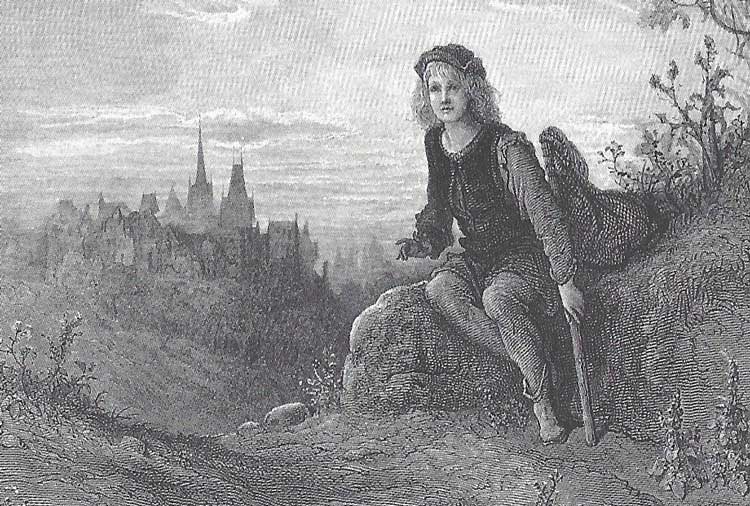
The legend of "Dick Whittington and his Cat" is one of England's most famous folk tales, and there is evidence to suggest that the pantomime version of the story, that still delights audiences today, was being played in much the same form in the 17th century.
Dick was a poor boy who lived in the days of Edward III and who came to London expecting to find the streets "paved with gold".
Unfortunately, the best he could manage was employment as a scullion in the Kitchen of a wealthy merchant, Mr Fitzwarren.
Bullied by the cook, and plagued by the mice and rats that infested his attic, the poor lad was thoroughly miserable.
Hoping to deal at least with the latter of his problems, he bought himself a cat, which soon rid his room of the troublesome furry pests.
When Mr Fitzwarren offered his servants a stake in a cargo of merchandise that was bound for Barbary, Dick had nothing to venture but his cat. Fortunately, his employer accepted the feline investment, and the ship set sail. But no sooner had it done so, than the cook's harassment intensified, causing Dick to run away. He had gone as far as Holloway when, exhausted and footsore with the uphill trek out of London, he sat on a stone to rest his weary legs. As he was catching his breath, the bells of Bow Church began to chime in the valley below, and Dick fancied that he heard them speak, urging him:-"Turn again Whittington Thrice Lord Mayor of London"
Intrigued, he decided to go back to Mr Fitzwarren's house, where he discovered that the ship had returned, and with it had come a change in his fortunes. Apparently the Captain of the vessel had arrived in Barbary to find the King’s Palace overrun with rats. He loaned him Dick’s cat, which quickly despatched the troublesome vermin, whereupon the grateful monarch purchased the entire cargo for a fantastical sum of money and paid ten times the amount again, to buy Dick’s cat. Thereafter, Dick Whittington’s fortunes went from strength to strength. He married his master’s daughter Alice and prospered immensely, crowning his achievements by becoming, just as the bells had foretold, three times Lord Mayor of London.
The historical Richard Whittington (1358-1423) was the youngest son of Sir William Whittington, a wealthy Gloucestershire Squire.
By his early thirties. he was a successful London mercer and had married Alice, the daughter of Sir Ivo Fitzwaryn.
By the 1390's he was a master mercer, employing five apprentices and supplying expensive silks, cloth and textiles to the court of Richard II. He had also begun loaning money to the Royal Exchequer and, when the mayor of London died in 1397, the King showed his gratitude by appointing Whittington to the post.
The citizens of London appear to have been more than satisfied by this, since the following year they re-elected him.
When Henry IV deposed Richard 11 in 1399, Whittington continued to prosper and such was his importance a source of ready cash to the Crown that, by the end of Henry's reign, he had lent a total of £21,562.
Since usury was illegal at the time, it seems that Whittington's only profit from these loans was the currying of Royal favour.
He became mayor twice more, in 1406 and 1419, and served as MP for London in 1416.
There is still debate as to the nature of the historical Richard Whittington's cat.
The oft quoted theories that Whittington owed much of his wealth to the coal trade and that colliers were then known as "cats", or that he had invented the ship known as a "cat", in which coal was transported in the 18th century, are ingenious though unlikely and, in truth, nobody really knows why his name became associated with a cat, although the connection was certainly established by Elizabethan times.
Alice Whittington pre-deceased her husband and, since they had no children, when he died in 1423, his fortune went to benefit his fellow citizens and to maintain the large number of charities that he had begun during his lifetime.
He was buried in the London Church St Michael Pater Noster, and, although the site of his tomb is now unknown, his memory lives on in one of England's most timeless and well known folk tales.